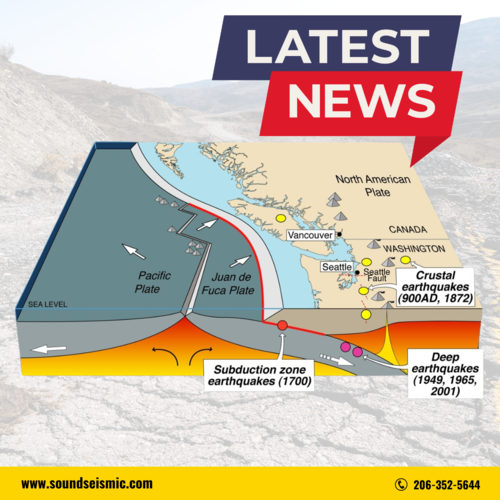New Insights Into Cascadia Subduction Zone: What the Latest Research Reveals
Understanding the Cascadia Subduction Zone
The Cascadia Subduction Zone, a 600-mile-long fault line stretching from Northern California to British Columbia, represents one of the most dangerous seismic regions in the world. As the Pacific Ocean floor subducts beneath the North American plate, tension builds over centuries, potentially leading to catastrophic earthquakes and tsunamis.
Recent Advances in Seismic Research
A groundbreaking study, published in Science Advances, has provided the most comprehensive analysis yet of the complex structures beneath the Cascadia Subduction Zone. Using state-of-the-art geophysical instruments, researchers have uncovered new details about the segmented nature of the megathrust fault, which may have significant implications for earthquake forecasting and preparedness.
A Segmented Fault with Unique Risks
One of the study's key findings is that the megathrust fault is divided into at least four distinct segments. Each of these segments may behave differently during an earthquake, potentially leading to varying levels of seismic activity along the fault line. This segmentation raises critical questions about whether a future earthquake could rupture the entire fault or only individual segments.
Implications for Earthquake and Tsunami Hazards
The new data suggests that the Cascadia fault's segmented structure could affect both the intensity and the geographic spread of future earthquakes. The Vancouver-Washington segment, in particular, has been identified as potentially the most dangerous, due to its smooth surface and the shallow angle at which the oceanic plate subducts beneath the continental crust.
Preparing for the Next Big Earthquake
The research has significant implications for building codes and disaster preparedness in the Pacific Northwest. With the potential for a major earthquake to strike at any time, it is crucial for authorities and residents alike to take proactive measures to mitigate the risks. Continued research and monitoring of the Cascadia Subduction Zone will be essential in refining our understanding of the threat and developing more effective preparedness strategies.
Future Directions in Seismic Research
Ongoing studies will focus on further analyzing the data from this latest survey to better understand the mechanisms driving the segmentation of the fault. Scientists are particularly interested in how these segments might interact during an earthquake and what this could mean for the likelihood of a full rupture.
The recent findings about the Cascadia Subduction Zone underscore the importance of continued research and preparedness efforts. By understanding the complex nature of this megathrust fault, we can better anticipate the risks and take steps to protect communities in the Pacific Northwest from the potentially devastating effects of a major earthquake.






 Sound Seismic
Sound Seismic